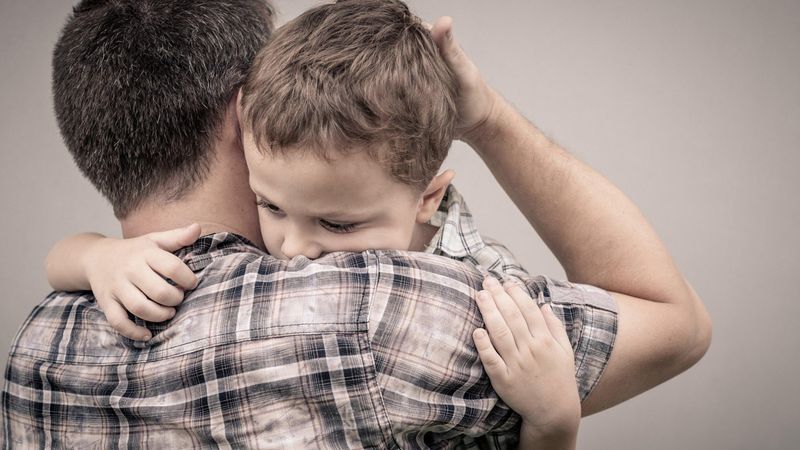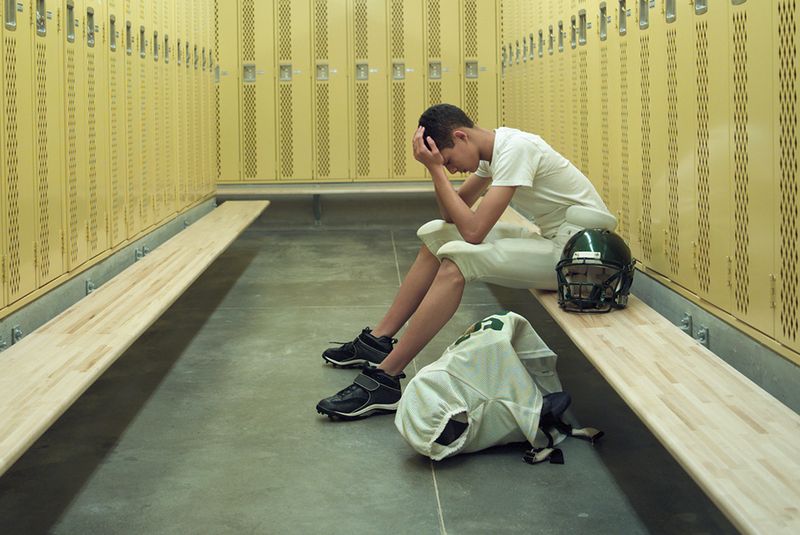18 Reasons Why Failing to Value Boys and Masculinity Can Turn Them Toxic
When we talk about toxic masculinity, we often focus on the behavior—aggression, emotional shutdown, dominance. But what’s rarely talked about enough is how it starts.
And the truth is, when society ignores, dismisses, or shames boys simply for being boys, it doesn’t lead to emotional maturity—it leads to emotional armor.
Toxic masculinity isn’t born. It’s often a reaction to a world that told boys they weren’t allowed to feel, be seen, or be human.
Here are 18 reasons why failing to value boys and masculinity can actually create the very toxicity we say we want to prevent.
1. Boys are taught early that their feelings don’t matter.

Ever told a boy to “man up”? It’s like handing him a roadmap to emotional repression. When boys hear phrases like “stop crying,” they learn early that showing emotions equals weakness. Their tears dry up not because the pain fades, but because expressing it isn’t safe.
Over time, these unacknowledged emotions twist into something darker. The boy who learned to bottle it up, grows into a man who doesn’t know how to let it out. Anger becomes the loudest voice because it’s the only one that’s been heard.
This isn’t just about boys growing up tough; it’s about them growing up without emotional tools. They miss the message that vulnerability is part of being human. And without knowing how to navigate their feelings, they can get lost in them. That’s where toxicity can creep in.
2. They’re praised for toughness, but punished for vulnerability.

In a world that applauds tough guys, tenderness often gets sidelined. Boys learn the hard way that being soft invites ridicule, while being hard earns respect. It’s a confusing cocktail of messages that leaves them wondering if kindness makes them lesser.
Imagine being celebrated for winning a game, yet when you show tears of frustration, you’re told to pull it together. The message is clear: strength is valued, softness is not.
This dichotomy forces boys to construct emotional armors, hiding vulnerability behind stoic masks. They start equating personal value with how well they can guard their emotions. But what happens when the mask becomes too heavy to bear?
When vulnerability is punished, it turns into shame, and shame can be toxic. Boys need to know it’s okay to be both strong and soft, that true power lies in embracing all aspects of themselves.
3. Masculinity is treated like a problem instead of a strength.

The word ‘masculinity’ often carries baggage, like a suitcase filled with stereotypes. Boys are caught in a tug-of-war between societal expectations and their natural inclinations. Instead of celebrating masculinity as a strength, it’s often painted as a flaw.
Imagine growing up constantly hearing what’s wrong with being a boy. It creates a rift between identity and self-worth. Society tells boys to be more, less, different, but rarely just themselves.
When masculinity is demonized, boys don’t get to explore what it truly means to them. They grow up on shifting sands, unsure of their footing. Instead of finding balance, they might lean into extremes, reinforcing the very stereotypes society wants to dismantle.
The truth is, masculinity isn’t the enemy. Misunderstanding it is. Embracing healthy masculinity can help boys grow into well-rounded individuals.
4. They’re expected to “figure it out” without emotional tools.

Picture this: a boy handed a jigsaw puzzle but no picture to guide him. Told to “figure it out,” he’s left in the dark about emotions. While girls are often encouraged to talk it out, boys receive mixed signals — silence is strength.
Without emotional guidance, boys wander through feelings without a map. They’re expected to navigate complex emotions without tools, leading them to suppress rather than express.
The result? A pressure cooker of unspoken words and feelings. As the lid clamps down tighter, the risk of an explosive release grows. Anger, aggression, and confusion become the default languages when words fail them.
Boys need a safe space to unpack their thoughts. Teaching them to articulate emotions isn’t weakness; it’s equipping them for life. When they learn the language of the heart, they’re less likely to resort to armor.
5. Healthy male role models are missing from their lives.

In a world where positive male role models are scarce, boys often find themselves adrift, searching for guidance. Fathers, mentors, or even fictional heroes shape how they see themselves. But what happens when these figures are absent or flawed?
Boys need examples of balanced masculinity to envision their futures. Without role models, they’re left to piece together their identities from fragmented stereotypes and misconceptions.
When fathers are absent or emotionally unavailable, boys miss out on crucial lessons in empathy, kindness, and strength. Instead, they may mimic what little they see, whether it’s hyper-masculinity or emotional detachment.
Imagine a boy learning to fish with his father, each cast of the line a lesson in patience and connection. This nurturing presence can steer him away from toxic patterns and towards a healthier, more fulfilling manhood.
6. They receive mixed messages about what’s “manly.”

One moment, a boy is told to embrace sensitivity; the next, he’s urged to hide it behind a mask of stoicism. Mixed messages about manliness leave boys spinning in a whirlwind of confusion, trying to catch the right signal.
Imagine standing in a store aisle, one side lined with sports gear, the other with books of poetry. Society’s signals clash, leaving boys to navigate a maze of expectations.
This push and pull makes them question their identity. Do they express or suppress? Be the fighter or the philosopher? Such contradictions can lead to extremes as boys seek safety in certainty.
Helping them understand that masculinity isn’t a single note but a symphony can make all the difference. Encouraging them to explore all facets of themselves, without fear of judgment, can dismantle the toxic belief that there’s only one way to be a man.
7. They’re often labeled as “bad” instead of guided when they act out.

When boys act out, the automatic response is often discipline rather than understanding. Instead of asking “What’s wrong?” they hear “You’re wrong.” This knee-jerk labeling discourages self-expression and growth.
Imagine being in a classroom, emotions bubbling over. Instead of guidance, a boy gets detention. The underlying message? His feelings are a problem, not a puzzle to be solved.
Instead of labeling and punishing, we need to ask why. Boys act out when their emotions overflow without an outlet. They need guidance to unpack these feelings, not judgment for having them.
By shifting focus from punishment to understanding, we can teach boys to articulate what’s beneath their behavior. This paves the way for healthier emotional development, turning potential toxicity into positive growth.
8. They don’t learn how to name or process emotions.

Imagine having a storm of feelings inside but lacking the words to describe it. For many boys, emotions are a foreign language they’re never taught to speak. This silence leads to emotional chaos.
Boys often learn to navigate life without the emotional vocabulary necessary to express their internal world. They might feel anger, but underneath, there’s sadness, fear, or even love they can’t articulate.
Picture a boy sitting in a park, journal in hand, searching for words to match his feelings. Without guidance, this journal remains blank, and so does his emotional understanding.
Teaching boys to name their emotions is crucial. This isn’t about labeling weakness; it’s about giving them the tools to understand themselves and others. With words, emotions can be processed instead of bottled, reducing the chance of them turning into harmful actions.
9. They’re discouraged from showing affection or asking for help.

In a world that often prizes independence over connection, boys receive a clear message: affection is not manly, and asking for help is weakness. This belief isolates them, even in caring environments.
Picture a boy at a school gate, hand hovering, unsure whether to hug his friend goodbye. This hesitation isn’t natural; it’s taught. Boys grow up touch-starved, longing for closeness but fearing judgment.
Boys internalize the idea that real men don’t need anyone, which can lead to loneliness and emotional walls. They become islands when they should be part of a community.
To combat this, we must encourage them to embrace affection openly and seek help confidently. When boys learn that strength includes reaching out, they build healthier relationships and emotional resilience, steering away from toxic solitude.
10. They’re taught that their value is based on performance.

In the performance-centric world, boys are often judged by their achievements, not their character. Grades, goals, and trophies become the yardsticks of self-worth. But what happens when they fall short?
Imagine sitting in a locker room, jersey clutched in hand, feeling invisible after a loss. The message is clear: without success, what are you?
This pressure to constantly perform traps boys in a cycle of anxiety and fear of failure. They’re praised when they win but feel discarded when they don’t measure up. Their identity hinges on external validation rather than internal value.
To break this cycle, we need to celebrate effort and personal growth, not just outcomes. Boys should learn that their worth isn’t tied to success but to who they are as humans. This shift can help them value themselves beyond achievements, fostering healthier self-esteem.
11. They’re made to feel ashamed for being boys.

In recent times, jokes like “boys are trash” have become mainstream. While seemingly harmless, they plant seeds of shame in young minds. Boys start to internalize the idea that their gender is inherently flawed.
Picture a boy on a swing, hearing these words echo in his mind. It’s not just teasing; it’s a narrative that chips away at his sense of self.
This guilt for simply existing can lead to self-loathing and confusion. Boys deserve to grow up feeling proud of who they are, not burdened by stereotypes or collective blame.
To nurture healthy masculinity, we must change the conversation. Instead of shaming boys, we should guide them in understanding and embracing their identity. By promoting positive dialogue, we help boys grow into empathetic and self-assured men, free from the weight of unjust shame.
12. They’re told to be protectors—but never protected themselves.

Boys are often raised to be the protectors, the shields against the world’s harshness. But who protects them when they feel vulnerable? This imbalance leads to emotional numbness as a defense mechanism.
Imagine a teenage boy stepping in front of a younger child, embodying strength. Yet inside, he’s just as in need of support and protection.
The expectation to always be strong denies boys the chance to experience vulnerability and seek comfort. They’re taught to protect, never to be protected, creating emotional walls.
By acknowledging their need for protection, we allow boys to experience life’s full emotional spectrum. It’s vital to teach them that seeking help is a sign of strength, not weakness. Only then can they become true protectors, grounded in empathy and understanding, rather than fear and armor.
13. They don’t see balanced masculinity in media.

In media, masculinity is often portrayed in extremes: the hero with bulging muscles or the quirky sidekick. Rarely do boys see balanced, nuanced male characters that reflect real life.
Imagine sitting in a room filled with superhero posters, watching TV, yet never seeing yourself truly represented. Boys are bombarded with images that equate manhood with physical prowess or comedic relief.
This skewed portrayal leaves them grappling with unrealistic standards. They strive to fit into narrow boxes, limiting their self-expression and growth.
To promote healthy masculinity, media must depict diverse male characters who embody strength, vulnerability, humor, and compassion. When boys see themselves reflected in varied roles, they learn to appreciate their unique qualities without conforming to stereotypes.
14. They’re ridiculed for expressing traditionally “feminine” interests.

When a boy shows interest in dance, fashion, or art, he risks ridicule for stepping outside traditional gender norms. Society’s rigid boxes stifle creativity and reinforce toxic masculinity.
Imagine a boy in art class, brush in hand, surrounded by skeptical eyes. His passion for painting is dismissed as “girly,” leaving him torn between authenticity and acceptance.
This ridicule teaches boys to hide their interests, fueling insecurity and shame. But when we celebrate diverse passions, we empower them to explore and innovate.
Encouraging boys to pursue what they love without fear of judgment nurtures self-confidence and creativity. By breaking down gendered barriers, we allow them to flourish in any field, fostering a more inclusive and accepting society.
15. They’re expected to lead—but rarely taught how.

Boys are often told to “lead,” yet rarely are they given the tools to do so with empathy and understanding. Leadership becomes a quest for power rather than service.
Imagine standing at the head of a classroom, tasked with leading a group, yet feeling ill-equipped for the responsibility. Boys may default to dominance because true leadership skills remain untaught.
Leadership isn’t just about being in charge; it’s about guiding with integrity and compassion. Boys need role models who demonstrate this and education that emphasizes the value of collaboration over control.
By teaching boys the principles of effective leadership, we prepare them to inspire rather than intimidate. Armed with these skills, they can break free from toxic patterns, leading with both competence and kindness.
16. Their trauma is often overlooked or minimized.

When boys experience trauma, they’re often expected to “tough it out.” This minimization can lead to unprocessed pain festering beneath the surface.
Picture a boy in a therapist’s office, hesitantly sharing his story. The world often dismisses his pain, assuming resilience equals silence.
Neglecting their trauma perpetuates the stigma that seeking help is weak. Boys deserve the space to heal, to be heard and supported without judgment.
Acknowledging their trauma and providing appropriate care fosters emotional healing and resilience. By creating environments that validate their experiences, we empower boys to overcome adversity with strength and self-awareness, paving the way for healthier futures.
17. They’re made to feel disposable in relationships.

In relationships, boys are often seen as providers, protectors, but not always equals deserving of love and care. This perception leaves them feeling disposable, valued for what they do rather than who they are.
Imagine sitting on a park bench, contemplating a relationship where you feel more like a role than a partner. Boys are taught to give without expecting reciprocation, leading to emotional imbalance.
To nurture healthy connections, we must reinforce that boys deserve to receive love and support. Relationships should be mutual exchanges, not one-sided obligations.
By promoting the idea that boys are worthy of care, we break the cycle of disposability and cultivate partnerships built on respect and empathy. This shift empowers them to engage in meaningful, balanced relationships.
18. They’re denied emotional language—so they use control instead.

Without the words to express feelings, boys may resort to control as a form of communication. This lack of emotional language creates a cycle where dominance disguises vulnerability.
Picture a boy at a table, stress ball in hand, struggling to articulate his emotions. Unable to say “I’m scared” or “I feel rejected,” he turns to withdrawal or aggression.
Teaching boys emotional language is crucial for breaking this cycle. With vocabulary comes understanding, and with understanding, healthier expressions of emotions.
By encouraging boys to articulate their feelings, we provide them with tools for empathy and connection. This approach fosters emotional intelligence, reducing the likelihood of toxic behaviors rooted in frustration and misunderstanding.







